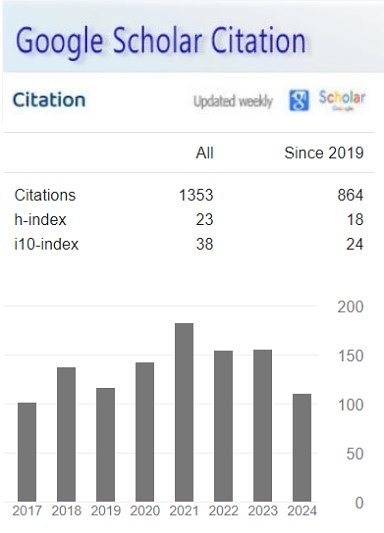An Early Cautionary Scan of the Security Risks of the Internet of Things
Keywords:
Abstract
The Internet of Things is playing an essential role in the evolution of a new and more intelligent world, one in which every aspect of daily life will be governed by it. Concerning the Internet of Things, security is by far the most important issue and component that needs to be addressed. Future generations will have a difficult time finding solutions to the security challenges that we are currently facing since there will be billions or trillions of connected devices in the world. The Internet of Things (IoT) paves the way for a variety of entities and applications that are to the advantage of humanity. Although it is the most important achievement of the decade, it has also given rise to catastrophic situations due to security problems such as threats, vulnerabilities, and assaults on linked and interconnected devices and objects. Despite the fact that it is the most significant accomplishment of the decade, it has also given rise to catastrophic scenarios. Despite this, it is without a doubt the most important accomplishment of the last ten years. Businesses and organizations around the world are lending their support to the ongoing paradigm shift by providing researchers and academics with financial aid. The Internet of Things, which will connect trillions of different devices, is the sector that is anticipated to have the greatest amount of growth over the course of this decade. It is believed that the Internet of Things will bring about a change in the manner in which we communicate. There are several serious risks associated with the Internet of Things, including physical attacks, network attacks, encryption attacks, software attacks, authorization, surveillance, identity theft, vandalism, and secure communication. One of the most significant risks is the theft of personal information. According to the conclusions of this research, none of the security architectures for the Internet of Things incorporate a security layer.
References
Gutlapalli, S. S. (2016). Commercial Applications of Blockchain and Distributed Ledger Technology. Engineering International, 4(2), 89–94. https://doi.org/10.18034/ei.v4i2.653 DOI: https://doi.org/10.18034/ei.v4i2.653
Lin, C., G. Wu, Enhancing the attacking efficiency of the node capture attack in win: a matrix approach, J. Supercomput. 66 (2) (2013) 989–1007. DOI: https://doi.org/10.1007/s11227-013-0965-0
Qian, J., H. Xu and P. Li, "A Novel Secure Architecture for the Internet of Things," 2016 International Conference on Intelligent Networking and Collaborative Systems (INCoS), Ostrawva, 2016, pp. 398–401. https://doi.org/10.1109/INCoS.2016.36 DOI: https://doi.org/10.1109/INCoS.2016.36
Singh, D., Tripathi, G. and Jara, A. (2015). Secure layers-based architecture for the Internet of Things. 2015 IEEE 2nd World Forum on Internet of Things (WF-IoT), Milan. pp. 321–326. https://doi.org/10.1109/WF-IoT.2015.7389074 DOI: https://doi.org/10.1109/WF-IoT.2015.7389074
Vashi, S., Ram, J., Modi, J., Verma, S. and Prakash, C. (2017). Internet of Things (IoT): A vision, architectural elements, and security issues. 2017 International Conference on I-SMAC (IoT in Social, Mobile, Analytics, and Cloud) (I-SMAC), Palladam, pp. 492–496. https://doi.org/10.1109/I-SMAC.2017.8058399 DOI: https://doi.org/10.1109/I-SMAC.2017.8058399
Zhang, W., Qu, B. (2013). Security Architecture of the Internet of Things Oriented to Perceptual Layer. International Journal on Computer Consumer and Control (IJ3C), 2(2).
Downloads
Published
How to Cite
Issue
Section
License
Copyright (c) 2017 Asian Journal of Applied Science and Engineering

This work is licensed under a Creative Commons Attribution-NonCommercial 4.0 International License.








